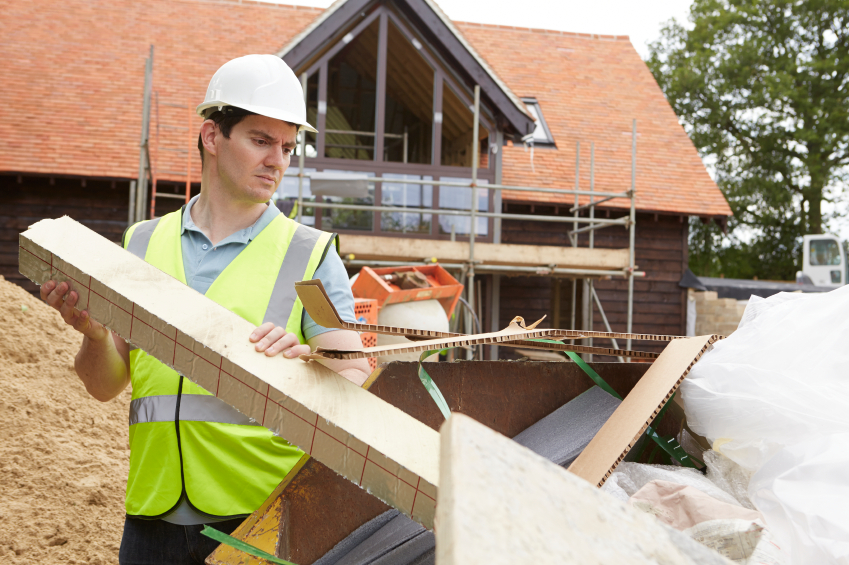Home » Uncategorised »
England Creating Homes at Lower Rate than at Start of Financial Crisis
This article is an external press release originally published on the Landlord News website, which has now been migrated to the Just Landlords blog.

England is creating homes at a lower rate than that recorded at the start of the financial crisis ten years ago, according to Department for Communities and Local Government (DCLG) data on net housing supply.
Just 217,350 more homes were created last year, compared with 223,530 in 2007/08, housebuilding investment platform Homegrown warns.
New build completions rose by 12% in 2016/17 on the previous year, to 183,570, which is still way off the 200,300 seen in 2007/08. Meanwhile, new homes from change of use increased by 22%, to 37,190 – a figure that had already risen by 48% in 2015/16.
There were 4,927 more office-to-residential conversions in 2016/17 (up by 38% to 17,751), as well as 600 fewer demolitions (down by 6% to 9,820).
Office-to-residential conversions have shot up in recent years, after changes to permitted development rights made it possible to avoid full planning applications.
The figures compare well to the aftermath of the financial crash, but Homegrown warns that, if the country cannot boost building sufficiently in the good times – when rewards for developers are high – then the country will never boost supply by enough to fix the housing crisis and make the dream of homeownership affordable for younger generations.
It was a decade ago this year that the sub-prime crisis took hold, causing the rate at which England was creating homes to tumble by 18% and 21% in 2008/09 and 2009/10 respectively, falling as low as 124,720 in 2012/13.

England Creating Homes at Lower Rate than at Start of Financial Crisis
It wasn’t until 2013 that we started to see the rate of creating homes grow, with rises as high as 25% in 2014/15.
At the same time, the average house price in England increased by 23% between March 2008 and March 2017, to £231,801.
August 2007 is widely held to have marked the start of the financial crisis. 9th August 2007 was the day that BNP Paribas froze three of its funds, suggesting that it could not value the sub-prime loans contained in the complex financial instruments on its books.
Doomed Northern Rock chief Adam Applegarth later described it as “the day the world changed”.
Anthony Rushworth, the Founder of Homegrown, comments: “One of the telling structural problems we see in England is that smaller developers struggle to raise the funds to build new homes even when house prices are in rude health. We already have fewer smaller developers than we did a decade ago, as many went out of business after the crash.
“In many areas where demand is high, land values are high and land is in short supply, these smaller developers are incredibly valuable.”
He adds: “We need to ensure, whatever comes down the line, that they are able to continue building, rather than periodically having to dance to the tune of relatively short-term ructions in the fortunes of house prices.”
Lindsay Judge, the Senior Policy Analyst at the Resolution Foundation, also says: “We’ve seen an encouraging increase in new homes in England over the last year, with supply growing by 15% to reach 217,000 additional dwellings in 2016/17.
“But, while this growth is welcome, we are still well short of the promised 250,000 new homes a year – a target that has never been met by any government over the last decade. The Government will need to do more to get to grips with the housing crisis. The Chancellor must take action to tackle high housing costs across the board in the Budget next week, and, in particular, show how the Government will help the many young people who are stuck in the private rented sector.”
Although it is believed that 12-month tenancies could be introduced in next week’s Autumn Budget statement, they may not actually be the best things for landlords or their tenants, one expert believes.
Finally, the Executive Director of the Intermediary Mortgage Lenders Association (IMLA), Peter Williams, responds to the data: “It is both impressive and concerning that the total of 217,350 extra dwellings which have been added to ease England’s housing supply crisis during 2016/17 has only been bettered once in the last 25 years. This is a clear indication of the repeated turbulence the housing market has had to endure and the relative strength of today’s market.
“Alongside the efforts of Government and housebuilders, improved lending conditions have been a crucial factor in four consecutive years of double-digit growth in new homes added to England’s housing stock. However, despite the annual rate of increase rising from 11% in 2015/16 to 15% in 2016/17, growth still lags behind the 25% achieved in 2014/15.”
He continues: “The importance of new build activity is unmistakable in today’s figures, with 84% of additional homes coming to market via this route. But there are fundamental unanswered questions about how Government and industry can best sustain the recent recovery against an uncertain economic background. Almost one in four new build completions, and one in five additional homes overall, are being supported by the Help to Buy equity loan scheme.
“As IMLA’s own report today suggests, there needs to be clarity on what happens next, long before its scheduled closure in 2021, and lenders have a key role to play in identifying the way forwards.”




